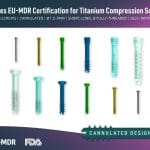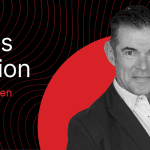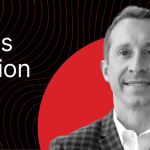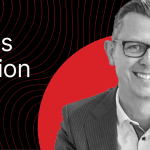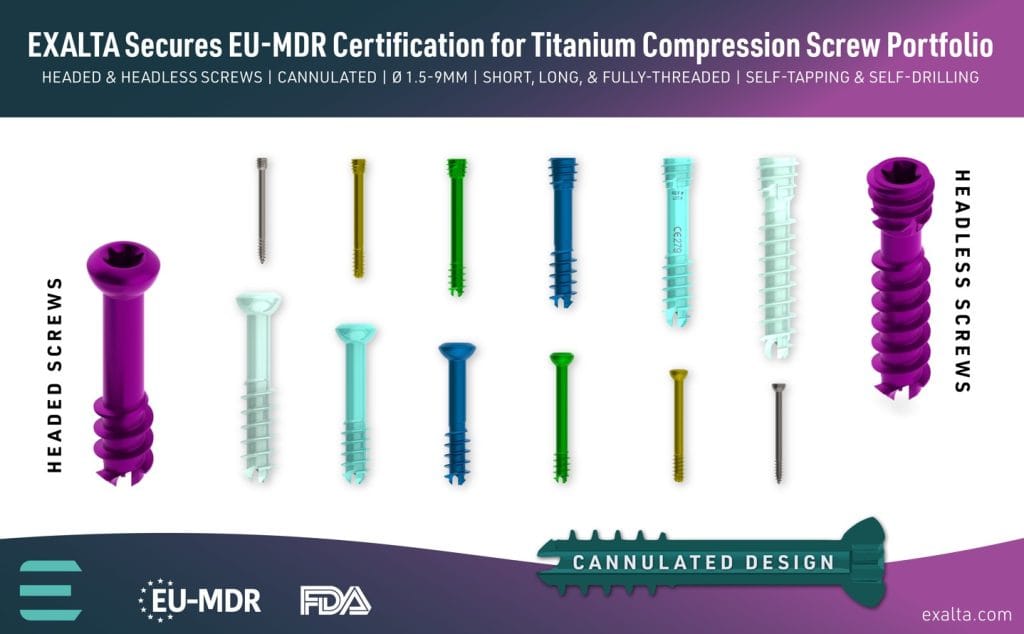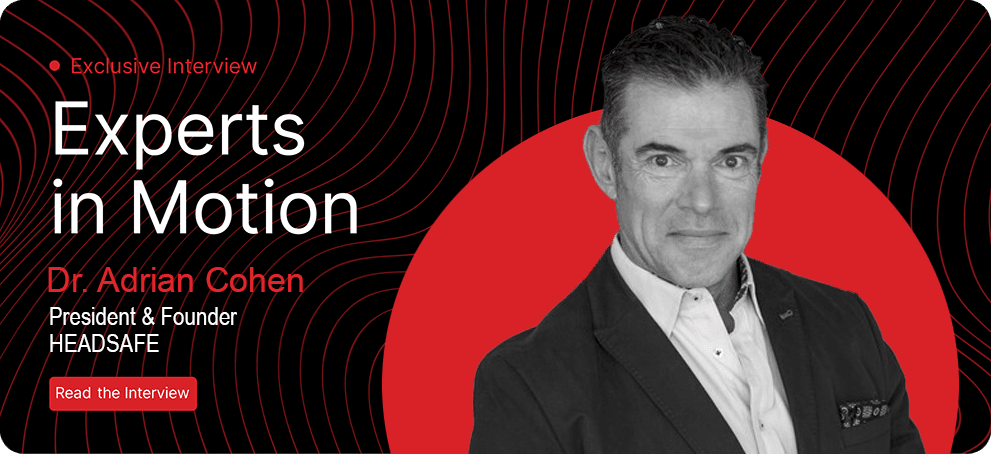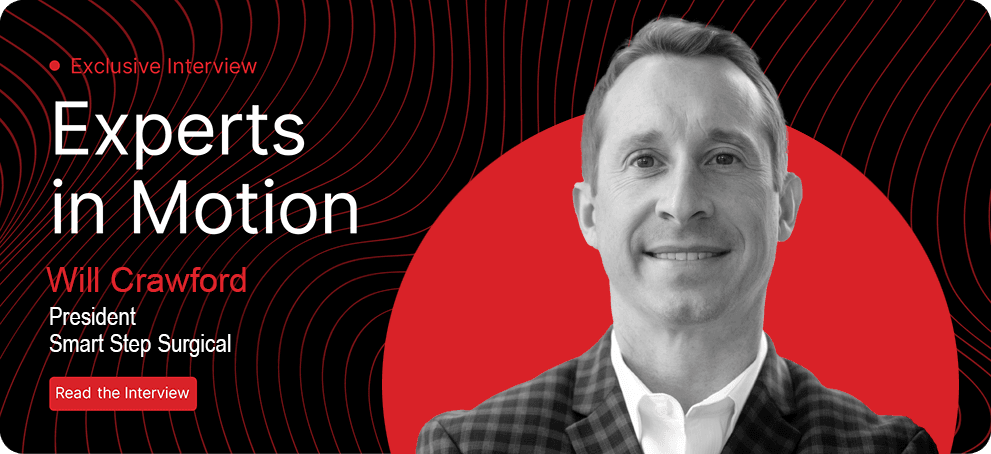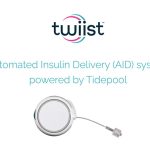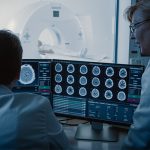Exclusive Interview: Michael Schmidt, VP of Strategic Innovation at Orlando Health
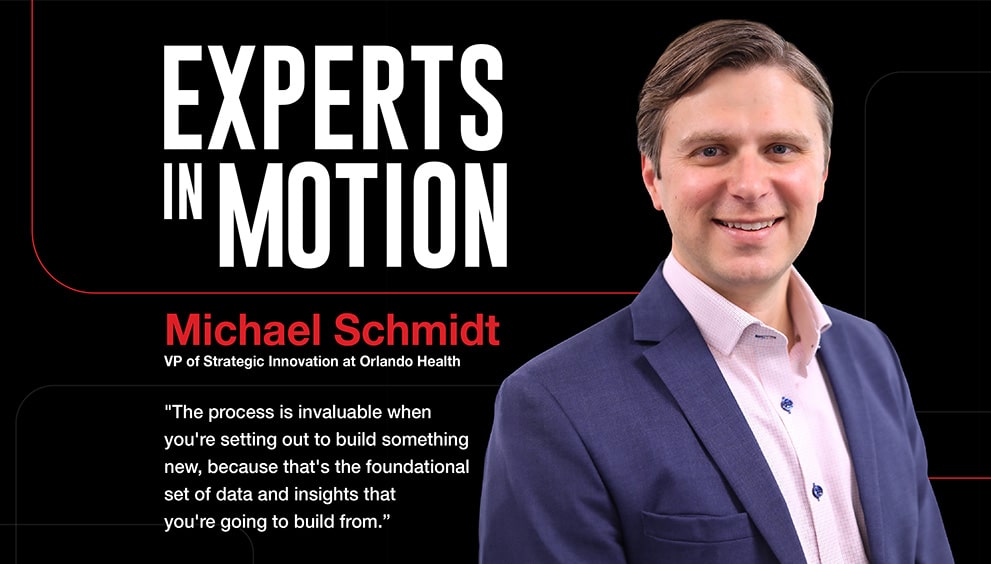

JP: For those unaware of what a VP of Innovation at a health system does, what exactly is your role? How does it fit in within the health system? And how does Strategic Innovations fit in within the health system generally?
MS: I’ve been with Orlando Health for 15 years now, which is kind of crazy, and spent a lot of time on the marketing and digital side. But about six and a half years ago, got the opportunity to start our Strategic Innovations program from scratch. Prior to that, we never had a program to work with Orlando Health team members or physicians who have innovative ideas. I love being able to start brand new things and work to get some consensus around what we should be doing and the best ways to do it. The first couple of years we were trying to figure out who do we want to be when we grow up as an innovation program, what competencies do we already have, and continue to build it from there.
We’ve grown our scope and our team including a venture capital team, three biomedical engineers, a seasoned nurse and a clinical research team. We can go from concept to prototype, to manufactured product, to clinical study, to commercialization, all within Orlando Health, led by this small team.
JP: It’s been a ton of fun to watch your progress over the last few years, but when you first started doing this, what were you trying to solve for, or specifically, what was the goal?
MS: We had a couple of goals at the outset, and it’s been fun to talk to other health systems that are just now starting their journey where we were in 2017. For us, at the outset, it was really simple. It was a way to continue to evolve the culture here and engage team members who have these innovative ideas. Historically, we’ve seen a lot of really good ideas either completely fizzle out because there was no support and strategy for what to do with them, or they would walk out the door and end up in the hands of industry, which is great because they still could lead to impactful products, but Orlando Health wasn’t able to get involved and certainly didn’t get the upside of helping innovations get commercialized.
Our leadership team was strategic enough and had the vision to build a program within the health system that not only could help uncover these innovations, but take them all the way to the finish line and make sure that we’re in a position to pick the winners that are going to create impact within Orlando Health. And also make sure we’re advancing ideas that help us reach our strategic goals, like helping us become safer and improving quality. When we look at an opportunity to do something, we try and figure out where it is going to help us and our patients, where is it going to move the needle?
At the outset, it was trying to find a lever that would help us engage the culture within Orlando Health in a deeper way. If we could generate some additional revenue on top, that’s great, but that was a secondary goal. Obviously, that’s evolved over time, but that’s where we started.
JP: Knowing Orlando Health and your team, I know you have looked at just about any type of innovation.
MS: Literally anything. I mean, we’ve looked at and worked on robots, AI software, consumer apps, a ton of medical devices, commodity healthcare products. You name it, it’s been pitched to us. The coolest thing too, is a lot of people assume it’s mostly physicians bringing ideas, and that’s true. We do have a lot of physicians that come to us, but we’ve gotten outreach and ideas from every corner of the organization, environmental services, radiology, respiratory therapy, nursing, marketing – every area across the board. We did a tally at the end of last year, and I think we’ve looked at over 400 product ideas since we started the program. We’ve got about 40 in some stage of development, validation, or getting ready for commercialization, which is really cool.
JP: How does your team and you view innovation generally?
MS: I always like to say it’s less about the things we might make or build, and it’s more about our team being and operating like a startup that happens to exist within Orlando health. Where we try and cut through the red tape, we try and bend the processes by which people normally do things and be a group that is reshaping how we creatively problem solve and implement the solutions. It’s not about thinking outside the box. Let’s get rid of the box and let’s look at it from a completely new perspective. For us, it’s about us being a team that people know they can count on to get really creative and approach things differently. But we also want to create that innovative influence throughout the organization as well.
I always hope our legacy is that we’ve empowered people to challenge the status quo and question how we can do things differently. And that a lot of times demystifies innovation. That word means a lot of things, and people can sometimes get intimidated by it. I just say its creative problem solving. We’re just trying to work to solve a problem. We’re just going to go about it in a really different way.
JP: You mentioned that the mandate for Strategic Innovations has evolved over time. What would you say it is today?
MS: I think it’s to help us achieve strategic goals, to try and be the x factor that’s helping us move the needle across the board. Now that we’ve got several spin outs that we’re starting to staff and get ready for commercialization, and we’ve got a bunch of products that will sell directly or look to sell through distributors, the focus is more on KPIs around those businesses and products that we’re working on. But the original goal remains. We’re trying to be a creative influence that’s evolving the culture here and creating an impact and generate some additional revenue on top of that.
We’ve developed this line of what we call nontraditional revenue that a lot of creative stuff falls into, our investment funds and the returns created there, the innovation program, some interesting joint ventures we’re doing and other things we’re doing throughout the system. We are trying to push the boundaries on what people might expect a health system like us to do and finding ways to monetize it appropriately so that we can just continue to reinvest in the services we provide or new innovation projects.
JP: What are some of the projects you guys are working on right now?
MS: One recent example of a spin out launch is Arthur app, which was started by one of our team members in marketing. Arthur is an iPad app that helps nonverbal patients. Someone who’s had a tracheostomy, or they’ve had surgery on their head or neck for whatever reason, can’t verbally communicate while they’re in the hospital setting. This app allows them to tap on buttons and it speaks out loud for them. It’s a curated set of common words and phrases that you’re going to need to use in a hospital, expressing pain, kind of where the pain is, requesting certain things like medication or be able to communicate symptoms or common issues.
We recently pushed it out across Orlando health and then brought in the team behind the EASE app that started within Arnold Palmer Hospital and then went on to grow pretty significantly. We were able to bring that team in to help us get this one to the finish line and they’re leading commercialization on that for us as well.
We’re at an interesting point this year. We finally have several things that will be in market. We’ve formed several subsidiaries. We’ve got a seed fund to be able to put money into our own spin outs and things like that. It’s an exciting point in time for us. And the diversity of products that we have is super cool.
JP: Clearly, there are many advantages of running this kind of innovation arm within a healthcare system. What are some of those advantages?
MS: The main advantage is it’s incredibly easy for us to figure out what solutions are really needed. A lot of the ideas that come to us, the team member or physician has gone through the steps to say, “okay, we need a product that does this and there’s nothing else out there that does it”. Our process is to say, that’s great and have them walk us through the problem. What led them to develop this, what necessitated that? And then spend time if it’s designed for a certain setting, like the operating room or ICU, in those settings trying to understand from their perspective, why this is needed? What else does it impact? Who does it impact?
We then try to understand who would use this innovation and the challenges from as many angles as we can. That process is invaluable when you’re setting out to build something new, because that’s the foundational set of data and insights that you’re going to build from. We also make sure we’ve clearly identified our end users and understand how will benefit them. Is it a clinical person that’s going to use and benefit from this, or is the patient actually going to use it and benefit? Is someone else going to use it? Does it have multiple touch points?
We keep coming back to the end user throughout the process of designing something, which can take several years, but every time we make some progress and want to get feedback, we’ll go back to the same people we talked to at the outset and say, here’s what we’ve got, here’s what we’ve added to it. What do you think? Our ability to get quick validation is key. We talk to external companies weekly that really struggle to get that sort of feedback and interaction with clinicians. Our internal access and way we engage with our team members is kind of the secret sauce. It keeps people engaged and interested in what we’re doing. It’s then easy for us to take any sort of product into the right settings and get feedback on it, and then when it’s ready, be able to test it with an actual pilot or a clinical study.
JP: What are some of the challenges that you have to deal with generally? You’re within a healthcare system, so what are some of the challenges that you have to deal with that you may not have to otherwise?
MS: There’s a lot. Early on, I realized we weren’t just getting one type of idea. And when you look at innovation programs within other hospitals, they tend to have sweet spots that they focus on. Some are purely digital. Some are heavy on the medical device, some are heavy on the life sciences, and a lot of time it depends on what their organization is like. I realized early we needed to be good at a lot of things, but then continue to figure out what sweet spots we wanted to really lean into and build our capabilities around. By year three or four, it became clear medical devices were going to be more than 50% of what we work on.
That meant we needed some internal engineering expertise and support within the team that also had the regulatory expertise to figure out which device innovations were navigable for us and which ones were too complex. We don’t want to be taking on a class three implantable devices, necessarily. That’s a really heavy lift for us to develop internally. So it’s continuing to kind of whittle away at what are the categories and kind of buckets that we want to excel at and be known for.
And then Covid was an interesting point for us. We used to have an annual cycle where we would collect ideas throughout the Fall and then work with medical and executive leadership to choose four or five that we would take through the program. During Covid, we were still getting 40, 50, 60 ideas a year and turning down too much good innovation. We decided to adjust our program and in 2020 flipped everything into a continuous program, and that’s really revolutionized how we interact. We now have different parts of the team that focus on early-stage ideas to figure out what’s promising and then different parts of the team focus on middle and late-stage work. It’s allowed us to double or triple our annual project capacity, which is great.
At the end of the day, our biggest challenge is bandwidth. We’ve got so much great stuff coming in, but only so many hours in the day. We have to be extra selective sometimes and make some tough decisions to make sure that we back the horses that can get to the finish line.
JP: And these innovations that are coming in, is it still mostly internal or is it a combination of internal and external?
MS: We still get significant volume internally. What’s new is we’re building out the ability to co-develop with industry. More and more industry players come to us because we’re a unique door into the organization. They are working on new concepts and would love to get some feedback, work with us in a deeper way to develop these innovations and help run the pilots plus get feedback from clinicians. We’ve been able to generate some significant co-development contracts with companies. Our goal at the end of the day is still for someone to license technology from us or that we can be the first to use the technology once it’s commercially ready.
JP: The name of this publication is MedTech Digest. So I have to ask you, why did it become clear, three to four years in, that medical devices were going to be about half of what you guys do?
MS: It’s just what we have seen grow organically. When we’re working with frontline clinicians, it matches how they think when they have a problem, when they see an existing device not working as well as it should, or when they don’t have anything to meet a need. Many will then dream up a device that attempts to solve some of those shortcomings. Some of it is software as a medical device, some it is physical devices, but the development path and regulatory aspect is the same. So, it’s kind of organically what people have brought us. We don’t do as much digital health as I expected us to, and there’s a couple reasons for that. Shortly after we started the program, Orlando Health also started the massive process to migrate to Epic.
That move to Epic put a lot of digital health projects on hold, so we couldn’t touch that environment for a long time. But as part of that project we’ve also, in parallel, created an IT innovation group that we now work with closely. They’re working to identify in a similar fashion what are some really innovative products that we can fast track to solve some needs, and how can we work to develop some of these larger scale software solutions where something new is needed. So that’s a really cool organic offshoot of what we started. That is a good partnership now with another part of the organization.
JP: Back to partnerships and collaborations. How do you view those? It sounds like they’re going to become more and more of a focus area. Are you able to share maybe an example of how you might work with industry?
MS: To me it is about extending our own capabilities while not increasing our overhead dramatically. Our end goal is not to have 1,000 startups that we fully control or a tremendous patent library that we can’t do much with. We’re trying to find the most efficient pathway to get innovations validated, commercialized and in use. And so more and more it’s trying to find the right partners that we can talk to as early in the process as it makes sense. It was becoming clear that for some situations we should reach out sooner than later and find ways to collaborate.
Several groups that we’ve talked to, including Honeywell and B. Braun, have always liked these team partnerships with teams that can help navigate some of this stuff because it is an expertise that is hard to find, even if they’ve got good connections at other systems. Not everybody can line up dozens of physicians or nurses, and get you some in depth feedback in an efficient manner. But we’re able to navigate throughout the system in creative ways.
JP: You mentioned startups a couple of times. How might they collaborate with your team and the system?
MS: Everybody is welcome to reach out to us. Last year we looked at about 400 startups, mostly through a venture perspective, but some of them were looking for clinical immersion and a bit of handholding at an early stage. We’ve got many different ways to engage with folks. I would encourage anyone looking to engage with us to visit our website, OrlandoHealth.com/Innovation. You can submit a contact us form and that comes right into the team for review. We look at everything through a strategic lens and have to try to figure out if the startup is working on something that is a strategic need of ours? Is it helping solve a critical problem? Where would we see the alignment and have to be able to work there before we get too far with anybody?
JP: I don’t know if you want to grade yourself, but you guys are six years in. How’s it going? What do you and your team do to continuously try to foster innovation?
MS: I would probably give us a B+ at this point. I think we’ve built a ton of capabilities and we’re working on some very impactful things. Our challenge today is the scale of the organization. We’re growing and growing fast. We’ve now got a number of facilities over in St. Pete. We’re really spread throughout central Florida. We’ve got several facilities down in Puerto Rico now. We are now constantly trying to figure out how to operate in such a large system to make sure that everybody in the system knows we’re here to help develop innovations. It’s a double-edged sword because once a new group finds out about us, we get flooded with awesome ideas.
It’s a delicate balance, but it’s really a lot of fun. We are encouraged by being able to walk people through the process. Most of the time a team member brings us an idea for the first time, it’s almost always at such an early stage. Sometimes they can’t even sketch out what they’re thinking. It’s just an idea in their head. Being able to help them put that on paper or a whiteboard and walk through all the steps and see the dots connecting in their head of things they hadn’t thought about is a gratifying part of the process. And then you eventually actually get to hand a prototype or the finished product to them at different points.
We got to hand an inflatable wrist splint to the orthopedic surgeon that developed it three years ago this month (February 2024). We finally got the manufactured version, and that’s just a good feeling of accomplishment for everybody that worked on it. We are able to put that back in their hands and have them feel like this was an awesome journey, but we’re actually really just getting started. It’s a cool process, and I think we also pride ourselves on being a really different team that just does things in a different way. That’s kind of my soapbox that I won’t back down from. You need someone who’s really looking at things differently and trying to be that creative spark.
Healthcare has a way of grinding innovation and evolution to a halt because you’ve got really stringent processes, you’ve got a really strict supply chain and hierarchy of how things are done, and that doesn’t bend easily. Our team has the latitude to try and push back against those things, but also making sure we’re winning people over in the process. I love it when people are skeptical of what we are doing and I treat winning them over as a new project.
JP: What does success look like for you and for the team in five years?
MS: When we’ve got pockets of people in the organization doing what we do in a somewhat autonomous manner. When we are able to point to dozens of products that are being used throughout Orlando Health and being used in other healthcare systems throughout the country, that we’ve got startups that graduated, moved on, and are doing really well commercially. And when our first one gets acquired, it’s going to be a huge win to celebrate. I think it’s just continuing to foster the environment that helps these things flourish and being able to celebrate wins when they come, that’s what we’re hoping for.
JP: MedTech Digest is all about momentum. How do you drive momentum personally and in your organization?
MS: It’s a tough balance. I realized early in my career I like to be on the front end of a process and start new things, and I like the envisioning aspect, but when you get into maintenance mode, that’s where it’s hard for me to keep focus. I get to do a little bit of both in this role where I try to be the creative spark, but also helping clear the path for the rest of the team to be able to excel at what they do. Collectively, we all have to continue to keep our eye on the horizon for kind of what’s next. If we get too heads down working on projects, we’ll begin to lose touch with the organization and our stakeholders and collaborators and kind of lose touch with the challenges we’re trying to solve.
I would say if we’re sitting at our desk here in the building too much, we’re not doing what we should be doing. We need to be out talking to people and rounding on the units and kind of brainstorming with people who have new ideas. It’s a balance.


